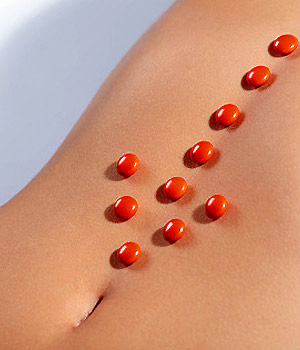What happens when you lower the rule? We answer your questions!
It is said that Andrew is here, which “comes each month,” occurs when the rule or menstrual period . Usually usually occursevery 28 days, although there are oscillationsthat are considered normal to some extent and can range from 21 to 40 days . But let’s parties.
Why is menstruation?
When girls enter puberty (between 8 and 13), the body’s hormones stimulate physical changes such as breast development and first menstrual period is known as menarche , blood flow indicating the maturity of the female reproductive system and subsequently mark the ovulation cycle.
To make it more clear. Once a month, a tiny egg leaves one of the ovaries and travels through the fallopian tubes to the uterus . The hormone estrogen stimulates the uterus to be coated with blood and thus is “prepared” for a pregnancy. If the egg is not fertilized, it does not stick and uterus removed all the lining of blood. The cycle is counted from the first day of bleeding in one month, until the first day of bleeding the following month.
Disorders of menstruation
The rule is a natural and necessary process. After the first rule changes are “normal” because he spends some time in the body is regulated. However, when it takes more than 40 days s appear rule or is it an irregular period or are we talking about a pregnancy.
Here are some common disorders of menstruation, which can be divided by the frequency, duration and quantity. But beyond that know their existence, if you notice something unusual, do not stop going to the doctor.
Rate or rhythm disorders
+ Amenorrhea: absence of 2 or more consecutive menstrual cycles. + proiomenorrea: cycles of less than 25 days or advancement of more than 5 days in the onset of menstrual bleeding. +opsomenorrea: cycles longer than 35 days or delayed by more than 5 days at the start of menstruation.
Disorders duration
+ Polymenorrrhea menstrual bleeding for more than 8 days. + Oligomenorrhea: menstrual bleeding less than 3 days.
Disorders quantity
+ Hypermenorrhoea: significant increase in the amount of regular menstrual bleeding. +Hypomenorrhea: marked in the usual decrease amount of menstrual bleeding.
Consequences of menstrual disorders
+ may indicate metabolic or alterations be indicative of future disease. + could reflect a propensity to overweight or obesity + It would be early sign of type 2 diabetes and cardiovascular disease. +is a risk factor for the development of polycystic ovary syndrome (PCOS), an hormonal disorder that, if left untreated it can cause infertility.
eating disorders menstruation, bipolar disorder menstruation, autism menstruation, anorexia menstruation
According to the Group for Children and Adolescents of the Spanish Society of Gynaecology and Obstetrics, menstrual irregularities are a risk factor for
Causes of menstrual irregularities
The main reason that the rule is not get pregnant. If you are not pregnant may be due to any of these factors.
+ Emotional Factors related to stress and anxiety, which alter hormone production and disrupt the ovulatory process.
+ Disorders of the uterus , ovaries and endometrium as myomas, fibroids or cysts. + Loss or gain excessive weight .
+ eating disorders s such as anorexia or bulimia.
+Hormonal problems (mainly thyroid).
+ Too much exercise (it is common for endurance athletes presenting amenorrhea).
+ problems in the organs of the pelvis
+ drug s (some contraceptives affect the frequency and intensity menstruation)
+ Breastfeeding is also another reason why you may have missed periods or irregular periods.
+ premature ovarian failure caused by radiation, surgery, chemotherapy and cancer treatment.
+ menopause (around age 45)
How to prevent menstrual irregularities
+ Reduces levels of stress.
+ follows a proper diet , reducing refined carbohydrates. + Add nutritional supplements that help balance hormone disorders. They can be magnesium calcium or fish oil. + Practice exerciseregularly.
If you have any of these problems without thinking, see your gynecologist because as you saw and could be indicative of greater things. If you have a vi da sexually active and show some delay, do not discard the possibility of being pregnant. There are many homemade, easy to apply and get that can get you out of doubt evidence. In any case, go to the doctor.
Do you have any specific questions about your menstrual cycle?
disorders menstrual cycle
disorders pregnancy
disorders puberty
disorders of menstruation ppt
